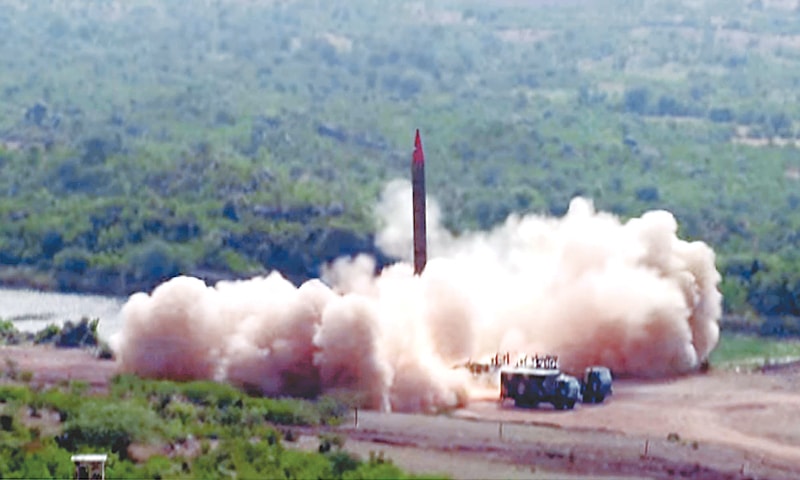
Islamabad: As part of its move to strengthen its defences, Pakistan has successfully conducted a training launch of a Ghauri medium-range ballistic missile.
The military’s media branch, Inter Services Public Relations Pakistan, said November 7 test was intended to determine the “operational and technical readiness of Army Strategic Forces Command.” ASFC operates Pakistan’s land-based, nonconventional ballistic and cruise missiles, most of which can be armed with nuclear warheads.
The Ghauri missile’s survivability on a battlefield is unlikely given it would have to move with a convoy of support vehicles that provide fuel and prepare it for launch; that grouping of platforms would make it vulnerable to detection.
The country has replaced the weapon with the more advanced and survivable Shaheen series of solid-fuel ballistic missiles.
But Mansoor Ahmed, an expert on Pakistan’s nuclear program, said the Ghauri first underwent testing in 1998 and is still useful. Ahmed, now in academia at the Australian National University, said the Ghauri “appears to be the most widely tested missile system in the Pakistani arsenal.”
“Although this particular test is a training exercise, in addition to validating improved technical and performance parameters, these tests could also be an affordable way to test new reentry vehicle technologies,” Ahmed added. And given “it is the only liquid-fueled ballistic missile in Pakistan’s strategic forces, the liquid-fueled tech may at least have given Pakistan experience to develop a satellite launch vehicle if it wants to go down that route.” The GhaGhauriAustralian National Universityuri is fueled by TM-185 (a mixture of gasoline and mainly kerosene) and fuming nitric acid, he explained.
While kerosene has been, and still is, used for space rocket applications, he said, fuming nitric acid generally is not. A more usual combination, he added, would be kerosene and high-test peroxide that may deliver a higher specific impulse — or greater bang for your buck in terms of efficiency — to deliver cargo to orbit.








